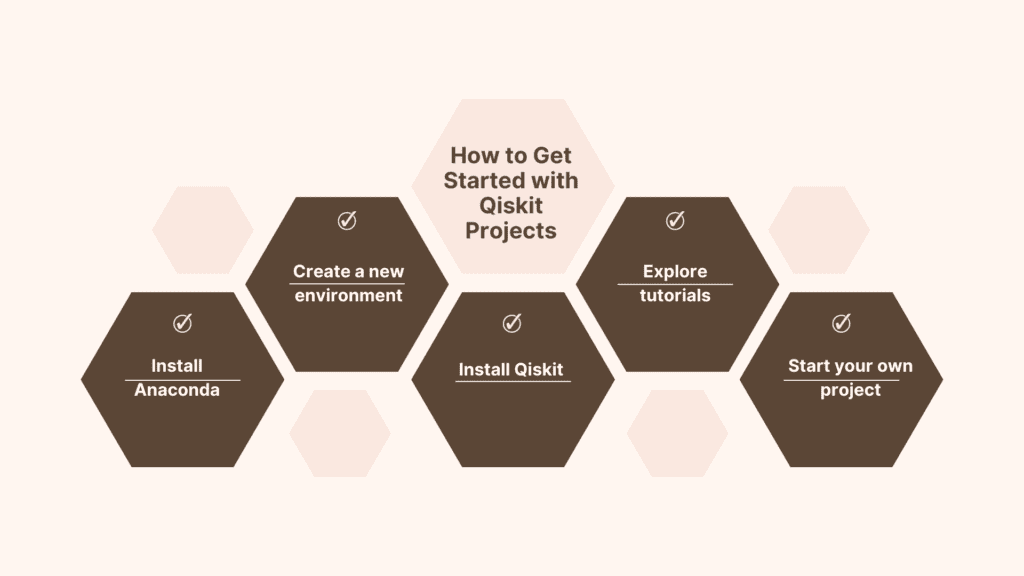Table of Contents
Key Takeaways
- The Qiskit Project Ideas article provides a comprehensive list of potential projects that can be undertaken using Qiskit, an open-source quantum computing framework.
- The article emphasizes the importance of understanding the basics of quantum computing and programming before diving into project ideas.
- It suggests starting with simple projects like creating quantum circuits and running basic quantum algorithms to gain hands-on experience with Qiskit.
- The article provides a range of project ideas, including implementing quantum error correction codes, simulating quantum systems, and exploring quantum machine learning algorithms.
- It highlights the significance of collaborating with the Qiskit community and participating in hackathons and competitions to enhance learning and contribute to the field.
- The article encourages readers to explore the Qiskit documentation, tutorials, and sample codes to gain a deeper understanding of the framework and its capabilities.
- It emphasizes the need for creativity and innovation in project ideas, suggesting that users can combine quantum computing with other fields like finance, chemistry, or optimization to create unique projects.
- The article concludes by emphasizing the potential impact of quantum computing and the importance of contributing to its development through projects and research.

The quantum world is a mysterious place, where cats can be both dead and alive. Qiskit Project Ideas offer a chance to explore this fascinating field. They are professional and innovative, enabling people to use quantum mechanics to solve complex problems and revolutionise industries.
Qiskit Project Ideas don’t have any domain restrictions. Cryptography, optimisation and simulation are just a few of the many possible applications.
IBM created Qiskit in collaboration with a global community of quantum enthusiasts. It has grown from humble beginnings into a comprehensive open-source framework. This history shows the collaborative nature of the project and its potential for the future.
Explore the realm of quantum computing and discover the power of Qiskit Project Ideas.
Top 10 Qiskit Project Ideas
Qiskit is a top framework for quantum computing development. Here are the top 10 projects you can try out with it:
- Implementing quantum algorithms – like Shor’s algorithm or Grover’s algorithm – with Qiskit.
- Simulating quantum systems with Qiskit.
- Analyzing the effects of noise on quantum systems and finding solutions with Qiskit.
- Using Qiskit to detect and correct errors in quantum computations.
- Solving optimization problems with Qiskit’s variational quantum algorithms.
- Analyzing and classifying data with quantum circuits from Qiskit.
And some more that Qiskit offers:
- Creating tools to visualize quantum circuits in Qiskit.
- Making interactive quantum games with Qiskit.
- Simulating molecules and chemical reactions with Qiskit for drug discovery and material science.
These projects give you a unique opportunity to explore quantum computing with Qiskit. Unleash your creativity and make a difference in this cutting-edge field!
Fun fact: IBM Quantum research shows that specific circuit optimizations from Qiskit can improve the performance of quantum algorithms! So, jump into the quantum realm and let Qiskit projects bend your reality!
How to Get Started with Qiskit Projects

Ready to explore the world of Qiskit? Here’s a 5-step guide to get you started:
- Install Anaconda – essential for working with Qiskit.
- Create a new environment – to keep your Qiskit installation separate.
- Install Qiskit – use the
pippackage manager. - Explore tutorials – official ones from the documentation.
- Start your own project – think of what interests you most and dive in!
Qiskit is open-source, allowing collaboration and contributions from the community across the world. Benefits include forums, research papers, and online meetups – all dedicated to quantum computing. But beware – it’s not as easy as it looks! Prepare for an exciting journey of mind-bending challenges and mind-numbing considerations.
Challenges and Considerations in Qiskit Projects
Qiskit projects require a deep understanding of four key factors:
- Quantum volume, which is a measure of the complexity that quantum systems can handle. It depends on the number of qubits and their quality.
- Noise mitigation, which is key to accurate results in quantum computations.
- Connectivity optimization, which ensures qubits are well connected for required operations.
- Scalability, which is essential as bigger quantum systems become available and computing demands rise.
This subject has an interesting history. Researchers have made significant progress in quantum computing. Addressing these challenges is important to keep driving Qiskit projects forward and shape the future of quantum computation.
We have plenty of resources to help you out with your Qiskit project. No need to feel stuck in a quantum entanglement!
Resources and Support for Qiskit Project Ideas

The resources and support for Qiskit project ideas are essential for success. A bunch of tools and guidance are available to explore the possibilities of quantum computing.
Here’s a list of resources and support that help develop Qiskit project ideas:
| Resources | Description |
|---|---|
| Qiskit Documentation | Guides and references to understand Qiskit. |
| Qiskit Textbook | Explains quantum computing concepts and algorithms. |
| Qiskit Community | Connect with professionals, researchers, and enthusiasts. |
| Quantum Computing Stack Exchange | Ask questions or get insights from others. |
| GitHub Repository | Access open-source projects and examples. |
Advanced resources like research papers, webinars, tutorials, and hackathons offer extra opportunities to learn and collaborate.
Personal stories shared in the community are also great sources of inspiration and motivation.
For example, one researcher found it hard to come up with an original project idea. After joining the Qiskit Community, they got help from professionals who guided them in researching quantum error correction methods. This interaction provided them with knowledge and motivation to solve real-world problems related to error-prone quantum systems.
In short, the resources and collective knowledge of the community spark innovation and help one venture into the amazing world of quantum computing. With the right tools, meaningful contributions to quantum computing can be made.
So, if life is a simulation, Qiskit is the key to unlocking it!
Frequently Asked Questions
Q1: How can I come up with project ideas for Qiskit?
A: Start by exploring the Qiskit documentation and tutorials to gain a better understanding of the platform. You can also participate in the Qiskit community forums and GitHub repositories where developers share their project ideas. Additionally, attending Qiskit hackathons or workshops can provide inspiration and opportunities for collaboration.
Q2: Is it necessary to have prior knowledge of quantum computing to propose a project idea?
A: While having prior knowledge of quantum computing can be advantageous, it is not necessary to propose a project idea. Qiskit offers comprehensive documentation and resources that can help you learn and explore quantum computing concepts. You can start with simple projects and gradually increase the complexity as you gain more understanding.
Q3: Can I work on a Qiskit project individually, or is it better to collaborate with others?
A: Qiskit projects can be pursued individually or in collaboration with others. It ultimately depends on your preference and the scope of the project. Collaborating with others can provide diverse perspectives, shared learning experiences, and an opportunity to work on more ambitious projects. However, individual projects can also be rewarding as they allow for personal exploration and creativity.
Q4: Are there any specific project ideas that have been successful in the past?
A: Yes, there have been numerous successful Qiskit projects in the past. Some popular project ideas include developing quantum algorithms for optimizing financial portfolios, simulating quantum chemistry, designing error mitigation techniques, and creating quantum machine learning algorithms. However, the possibilities are endless, and you can explore any field where quantum computing can bring unique advantages.
Q5: How can I get feedback or guidance on my Qiskit project idea?
A: Qiskit has an active community where you can seek guidance and feedback on your project ideas. You can participate in the Qiskit Slack channel, join Qiskit community forums, or share your project ideas on platforms such as GitHub. Additionally, attending Qiskit workshops, hackathons, or conferences can provide valuable feedback from experts in the field.
Can Qiskit Project Ideas Be Applied to R Programming?
Qiskit project ideas can indeed be applied to R programming. By combining the power of Qiskit, an open-source quantum computing framework, with R programming, developers can explore and implement amazing r project ideas. This fusion allows for the utilization of quantum computing capabilities in R-based projects, enabling the development of innovative and cutting-edge solutions.
Which Ncsc Project Ideas Can I Use with Qiskit Project Ideas to Unleash My Creativity?
Looking to unleash your creativity? Combine Qiskit project ideas with ncsc project ideas for creativity. Explore possibilities like quantum computing in cybersecurity, secure communication protocols, or quantum cryptography. Enhance your skills in both fields and push boundaries with innovative projects that challenge the status quo. Unleash your imagination and create something extraordinary with these NCSC project ideas for creativity.
Q6: Can I propose a project idea that involves hardware implementation with real quantum devices?
A: Absolutely! Qiskit provides access to IBM’s quantum devices, and you can propose project ideas that involve hardware implementation. However, it is important to consider the limitations and constraints of working with real quantum devices, such as noise and limited qubit connectivity. It is advisable to start with smaller scale projects and gradually progress to larger ones while considering the hardware constraints.
To wrap up, let’s discuss the key takeaways from Qiskit Project Ideas:
- Highlight the versatility and potential of these ideas to spur new quantum computing implementations.
- Stress the importance of collaboration among the Qiskit community to drive progress.
- Show how individual imagination can blossom through Qiskit Projects.
- Illustrate how these projects serve as a platform for real-world applications such as optimization and simulation.
- Showcase the importance of integrating Qiskit into educational programs for introducing students to quantum thinking.
- Encourage readers to explore these project ideas and embark on their own quantum journeys.
Additionally, Qiskit Projects provide a starting point for quantum researchers and developers to hasten their work.
For instance, Sarah was a computer science student who was captivated by quantum computing. She chose one of the project ideas and developed a novel algorithm to revolutionize financial portfolio optimization. Her work was noticed by the academic world and industry leaders, leading her to an exciting career in quantum tech.
As you explore these amazing project ideas, remember that with creativity and hard work, you can unlock groundbreaking possibilities in quantum computing. Unleash your imagination and explore the mysteries of this extraordinary technology.
References:
Also Read: